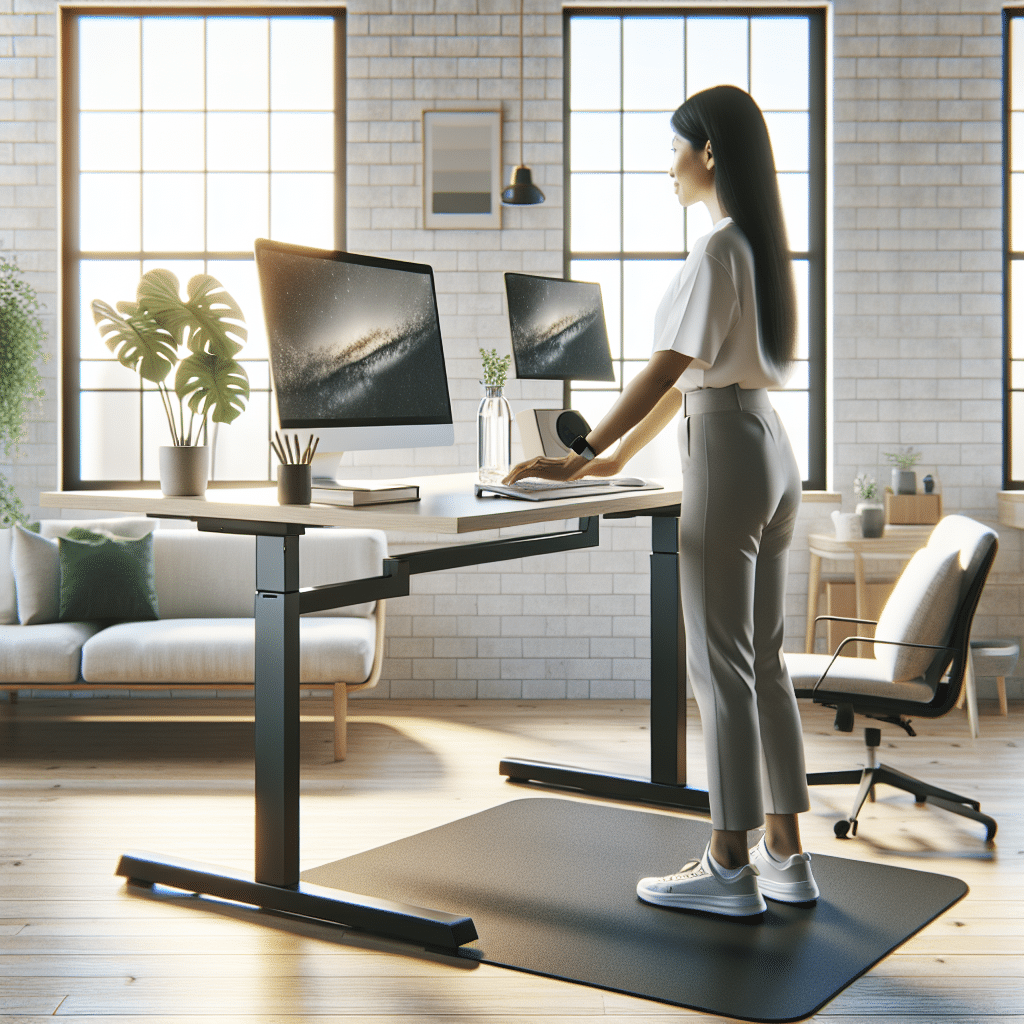Understanding Standing Desks
Standing desks have gained popularity among professionals seeking to combat the negative effects of prolonged sitting. Studies indicate that sedentary behavior contributes to various health issues, including obesity, cardiovascular disease, and musculoskeletal disorders. Standing desks, or desks that allow users to alternate between sitting and standing, aim to address these concerns. However, simply standing at a desk is not enough; implementing strategic wellness practices is vital for maximizing benefits.
Ergonomics: The Foundation of Standing Desk Usage
-
Correct Desk Height: Ensure your standing desk is at the correct height—typically, your elbows should be at a 90-degree angle or slightly obtuse when typing. Your wrists should remain straight, with your hands floating comfortably above the keyboard.
-
Monitor Positioning: The top of your monitor screen should be at or slightly below eye level, about 20 to 30 inches from your face. This helps reduce neck strain.
-
Footwear Matters: Supportive shoes can significantly enhance comfort during standing work. Avoid high heels or entirely flat shoes; instead, opt for cushioned insoles or supportive athletic shoes.
Movement and Breaks
-
Regular Breaks: Implement a schedule to remind you to take breaks. A good rule of thumb is the 20-20-20 rule: every 20 minutes, look at something 20 feet away for at least 20 seconds. This aids in reducing eye strain and refocusing.
-
Change Position Frequently: Alternate between sitting and standing throughout the day. A ratio of 1:1 or 2:1 (standing to sitting) is often recommended to avoid fatigue. The body thrives on variability.
-
Stretching Routines: Integrate simple standing stretches to relieve tension. Focus on neck, shoulder, back, and wrist stretches at least every hour. This micro-movement can improve circulation and decrease discomfort.
Incorporating Physical Activity
-
Walking Meetings: Suggest walking meetings with colleagues to encourage movement during discussions. A brisk walk can stimulate creativity and promote cardiovascular health.
-
Exercise During Breaks: Utilize brief breaks for quick exercises like calf raises, leg swings, or squats. Even a few minutes of activity can reinvigorate you during long work sessions.
-
Use a Balance Board: Incorporating a balance board can engage core muscles and enhance balance. This subtle movement can also increase calorie expenditure throughout the day.
Nutrition and Hydration
-
Stay Hydrated: Keep a water bottle at your desk to encourage regular hydration. Staying hydrated helps maintain energy levels and concentration.
-
Healthy Snacking: Opt for healthy snacks, such as fruits, nuts, and yogurt, rather than junk food. Nutrient-rich snacks will provide sustained energy without energy crashes.
-
Mindful Eating: When taking breaks, practice mindful eating by savoring each bite and ensuring you’re not multitasking. This practice can lead to more satisfied eating experiences and prevent overeating.
Mental Wellness Strategies
-
Mindfulness Practices: Incorporate mindfulness or meditation into your routine. Simple breathing exercises or short meditation during breaks can reduce stress and improve focus.
-
Personalized Music or Sounds: Use music or ambient sounds to create a pleasant working environment. Study suggests that music can enhance concentration and productivity.
-
Gratitude Journaling: Maintain a small journal at your desk to jot down things you are grateful for or accomplishments throughout the day. This fosters positivity and motivation.
Social Connections
-
Communicate Regularly: Ensure you maintain regular communication with colleagues. Building relationships can enhance job satisfaction and emotional wellness.
-
Join a Workplace Wellness Group: If your workplace offers wellness groups or activities, participate actively. Engaging with others can foster community and promote a supportive environment.
-
Know Your Resources: Be aware of mental health resources provided by your company, such as counseling services or wellness programs.
Using Technology Wisely
-
Ergonomic Accessories: Consider using ergonomic accessories like a wrist rest or footrest to enhance comfort and support while using a standing desk.
-
Progress Tracking Apps: Use apps to track your standing time, breaks, and exercises. Tracking progress can help reinforce positive behavior and encourage consistency.
-
Standing Desk Converter: If transitioning to a full standing desk feels daunting, a converter can allow you to easily switch between sitting and standing as needed.
Conclusion
By combining ergonomic practices, scheduled movement, healthy nutrition, mental wellness strategies, social connections, and technology, individuals can experience increased productivity and wellness benefits while using standing desks. It’s essential to find a balance that works for you and to be intentional about your well-being throughout the workday. The goal is not merely to stand but to engage meaningfully in a holistic approach to health while maintaining an active work life.
